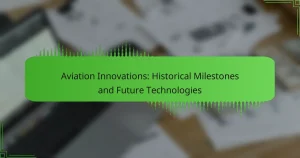Drones offer transformative commercial applications across industries, including aerial photography, agriculture monitoring, and delivery services. However, they face significant regulatory challenges, such as airspace integration and privacy concerns. Technological advancements are shaping their future, while operators must prioritise safety and compliance. Understanding these dynamics is crucial for navigating the evolving landscape of drone operations.
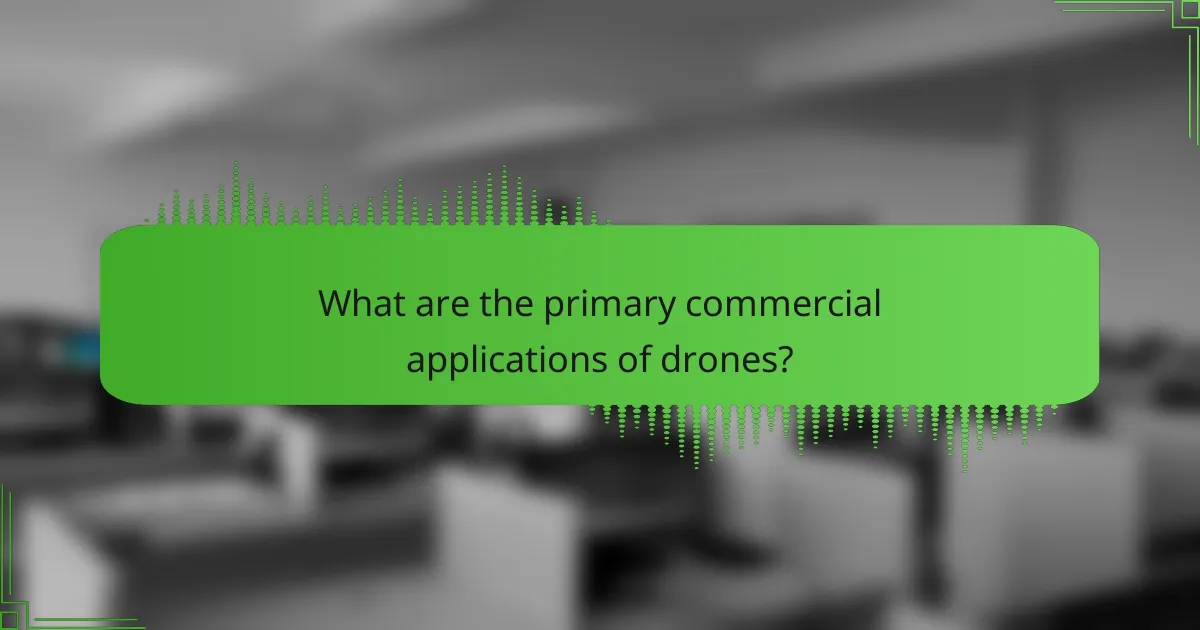
What are the primary commercial applications of drones?
Drones have diverse commercial applications across various industries. Key uses include aerial photography, agriculture monitoring, infrastructure inspection, delivery services, and disaster response.
In aerial photography, drones capture high-resolution images for real estate and marketing. Agriculture monitoring involves crop health assessment through aerial imaging, enhancing yield predictions. Infrastructure inspection utilises drones for surveying bridges, power lines, and pipelines, improving safety and efficiency. Delivery services leverage drones to transport goods quickly, reducing delivery times. Disaster response employs drones for assessing damage and locating survivors, enhancing emergency management.
These applications highlight the versatility of drones and their potential to transform traditional practices in multiple sectors.
How do drones enhance agricultural practices?
Drones significantly enhance agricultural practices by improving efficiency and accuracy. They enable precise monitoring of crop health, soil conditions, and irrigation needs. Drones equipped with multispectral sensors can capture data that informs farmers about plant health, allowing for targeted interventions. As a result, this technology can increase yield while reducing resource waste. Additionally, drones facilitate timely data collection over large areas, making them invaluable for modern farming.
What role do drones play in logistics and delivery services?
Drones play a crucial role in logistics and delivery services by enhancing efficiency and reducing delivery times. They facilitate last-mile delivery, especially in urban areas, and can navigate difficult terrains. Drones reduce operational costs by minimising the need for ground transportation. For instance, companies like Amazon and UPS are actively testing drone delivery systems to streamline operations. Regulatory challenges, such as air traffic management and safety compliance, remain significant barriers to widespread adoption.
How are drones utilised in construction and infrastructure monitoring?
Drones are utilised in construction and infrastructure monitoring to enhance efficiency and safety. They provide aerial surveys, monitor project progress, and conduct inspections in hard-to-reach areas. Drones capture high-resolution images and collect data, enabling real-time analysis. This technology reduces labour costs and minimises risks associated with manual inspections. Additionally, drones can create 3D models and maps, improving project planning and management. Their unique ability to gather data quickly makes them invaluable in modern construction practices.
What impact do drones have on aerial photography and videography?
Drones significantly enhance aerial photography and videography by providing unique perspectives and high-resolution imagery. Their ability to access hard-to-reach locations allows for creative shots that were previously difficult or impossible to capture. Drones can cover large areas quickly, making them efficient for projects like real estate marketing and event documentation.
The integration of advanced camera technology in drones, such as 4K resolution and gimbal stabilization, improves image quality and stability. As a result, professional filmmakers and photographers increasingly rely on drones for dynamic content creation.
Regulatory challenges, such as airspace restrictions and licensing requirements, can impact drone usage in aerial photography. Compliance with these regulations is essential to ensure safe and legal operations.
Overall, drones have revolutionised the field of aerial photography and videography, offering both creative opportunities and challenges that professionals must navigate.
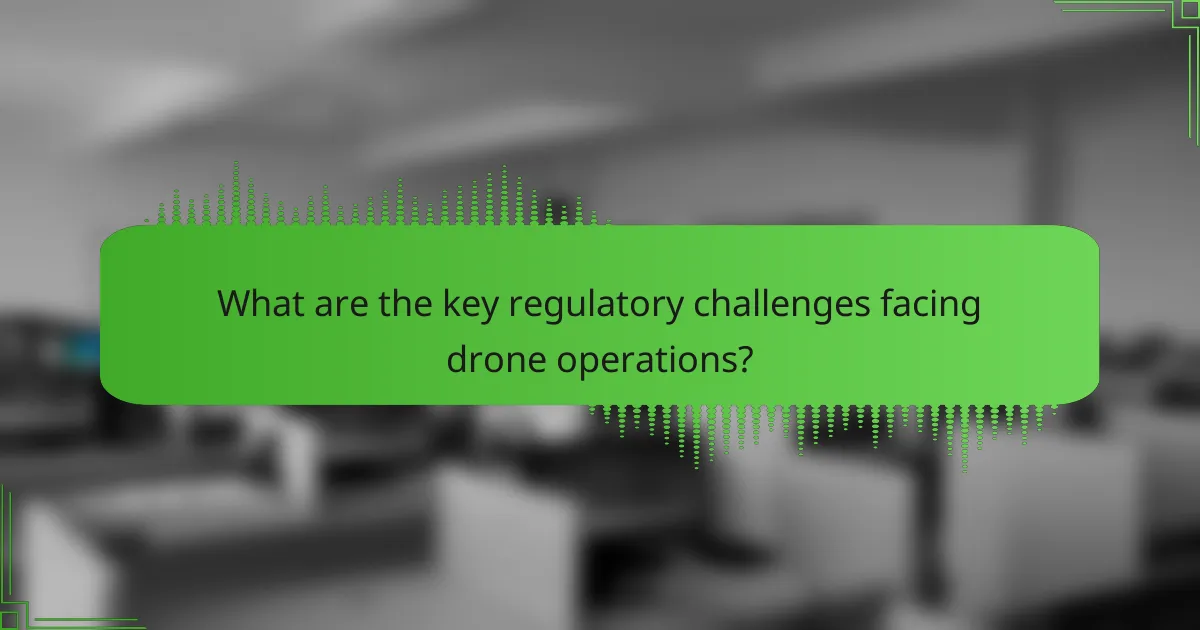
What are the key regulatory challenges facing drone operations?
The key regulatory challenges facing drone operations include airspace integration, safety standards, privacy concerns, and operational limitations. Regulatory bodies must balance innovation with public safety and security.
Airspace integration remains complex as drones share airspace with manned aircraft. Safety standards must address potential risks and establish clear protocols for operation. Privacy concerns arise from surveillance capabilities, necessitating regulations to protect individuals’ rights. Operational limitations, including altitude restrictions and no-fly zones, can hinder commercial applications.
As a result, ongoing collaboration between industry stakeholders and regulators is essential to develop effective frameworks that support safe drone operations while fostering technological advancement.
How do different countries approach drone regulation?
Countries approach drone regulation through varying frameworks, balancing innovation with safety. For instance, the United States emphasises a risk-based approach, allowing commercial operations under specific conditions. In contrast, the European Union implements a unified regulatory framework, focusing on operator competence and airspace safety.
China’s regulations prioritise rapid technological advancement, often streamlining approvals for commercial use. Australia adopts a more lenient stance, encouraging drone integration into various sectors with a focus on public safety.
These diverse regulatory landscapes reflect each country’s unique priorities and challenges in managing drone technology while promoting commercial applications.
What are the privacy concerns associated with drone usage?
Drones raise significant privacy concerns due to their ability to capture images and data without consent. Issues include unauthorised surveillance, data security risks, and potential misuse by both individuals and organisations. As drones become more prevalent, regulations struggle to keep pace with technology, leading to gaps in privacy protection. Public awareness and advocacy for stricter guidelines are essential to mitigate these risks.
How do airspace restrictions affect commercial drone operations?
Airspace restrictions significantly limit commercial drone operations by defining where and when drones can fly. These regulations ensure safety, protect privacy, and manage air traffic. Compliance with restrictions can delay operations and increase costs for businesses. For example, no-fly zones around airports and certain urban areas restrict access, making it crucial for operators to plan routes carefully.
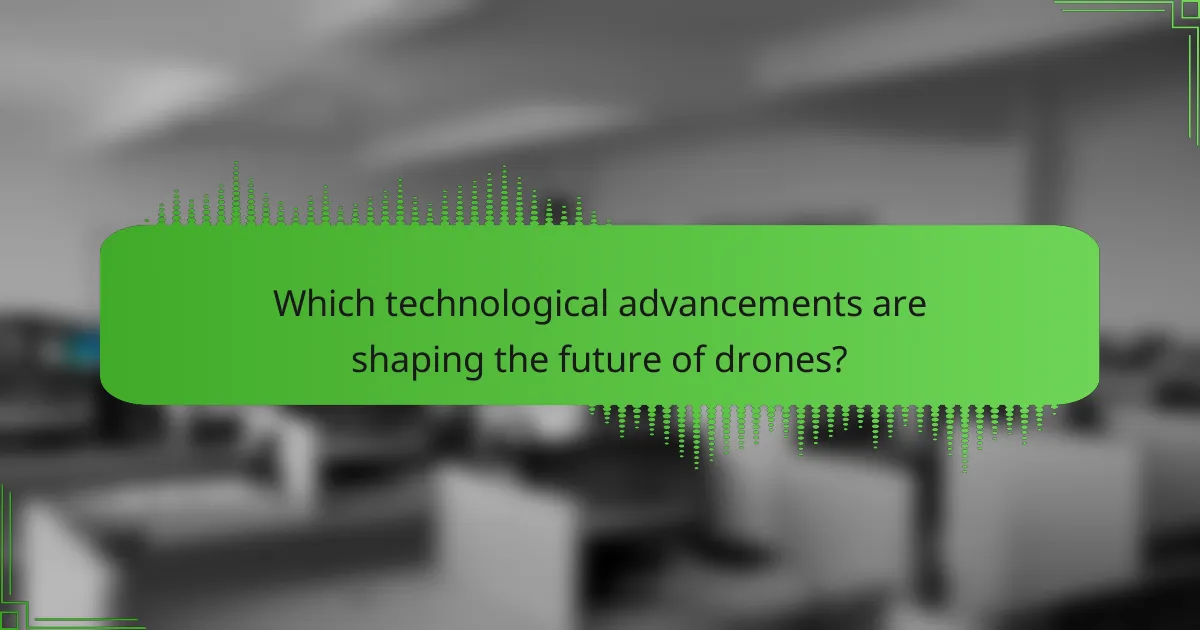
Which technological advancements are shaping the future of drones?
Technological advancements such as AI integration, enhanced battery life, and improved sensors are shaping the future of drones. AI enables autonomous flight and data analysis, while longer-lasting batteries extend operational time. Advanced sensors enhance navigation and environmental awareness, facilitating complex commercial applications. Additionally, 5G connectivity allows real-time data transmission, improving efficiency in various industries. These innovations address regulatory challenges by enhancing safety and compliance in drone operations.
What innovations in battery technology are enhancing drone performance?
Innovations in battery technology, such as solid-state batteries and advanced lithium-sulfur cells, significantly enhance drone performance. These technologies offer higher energy densities, longer flight times, and faster charging capabilities. For instance, solid-state batteries can improve safety and reliability by reducing fire hazards associated with traditional lithium-ion batteries. Furthermore, advancements in battery management systems enable better energy efficiency and real-time monitoring, optimising drone operations.
How do AI and machine learning improve drone navigation and autonomy?
AI and machine learning significantly enhance drone navigation and autonomy by optimising route planning and real-time decision-making. These technologies enable drones to process large datasets, improving obstacle detection and avoidance. Machine learning algorithms analyse flight patterns, allowing for adaptive learning and efficiency in various environments. For instance, drones equipped with AI can autonomously navigate complex terrains, making them invaluable in commercial applications like agriculture and logistics.
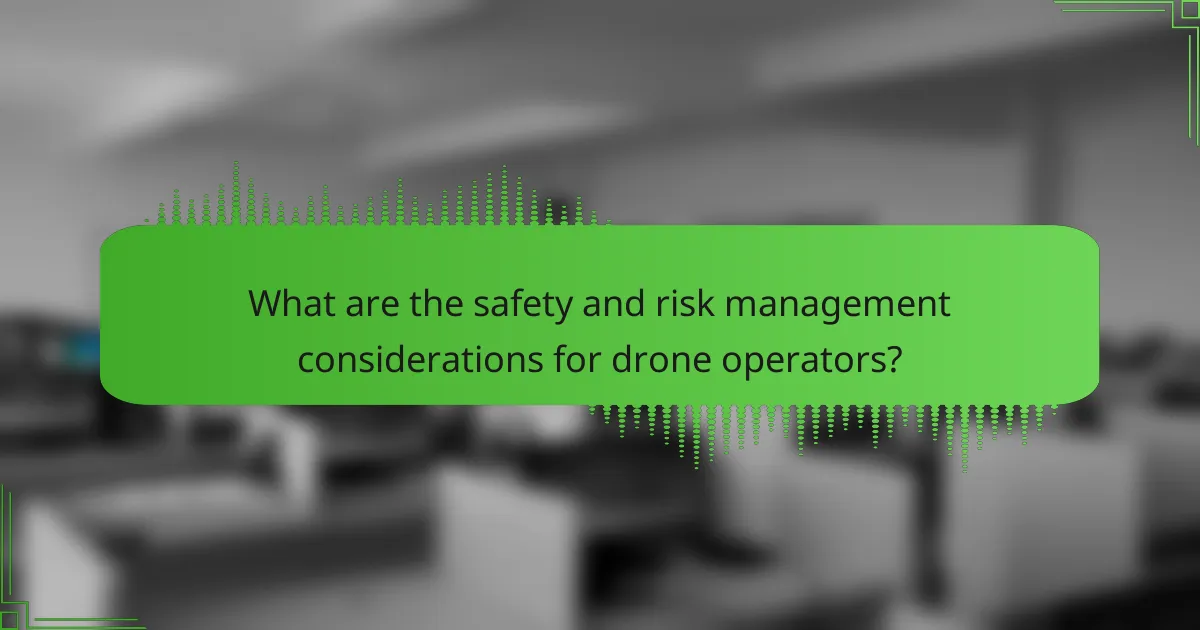
What are the safety and risk management considerations for drone operators?
Drone operators must prioritise safety and risk management to mitigate potential hazards. Key considerations include adherence to regulations, risk assessment, and operational protocols.
1. Regulatory Compliance: Operators must follow local and national regulations, including registration and pilot certification.
2. Risk Assessment: Conduct thorough assessments to identify potential hazards, including environmental and operational risks.
3. Safety Protocols: Implement safety measures such as pre-flight checks and emergency response plans.
4. Equipment Maintenance: Regularly inspect and maintain drones to ensure they function correctly and safely.
5. Training: Provide comprehensive training for operators to enhance situational awareness and decision-making skills.
6. Insurance: Obtain liability insurance to cover potential damages or accidents during operations.
How can operators mitigate risks during drone flights?
Operators can mitigate risks during drone flights by implementing comprehensive safety protocols and utilising advanced technology. Key strategies include conducting thorough pre-flight checks, maintaining line-of-sight operations, and employing real-time monitoring systems. Training personnel in emergency response and adhering to regulatory guidelines further enhances safety. Additionally, using geofencing technology can prevent drones from entering restricted areas, minimising potential hazards.
What are the best practices for drone maintenance and operation?
Regular maintenance and careful operation are essential for drone longevity and performance. Best practices include routine inspections, firmware updates, and battery care.
Inspect drones before each flight for physical damage and loose components. Check propellers, motors, and landing gear for wear. Perform firmware updates to ensure optimal functionality and compliance with regulations.
Battery maintenance is critical; avoid overcharging and store batteries at recommended temperatures. Monitor battery health regularly to prevent failures during operation.
Lastly, adhere to regulatory guidelines for safe operation. Understand local laws regarding airspace, altitude limits, and no-fly zones to ensure responsible drone use.
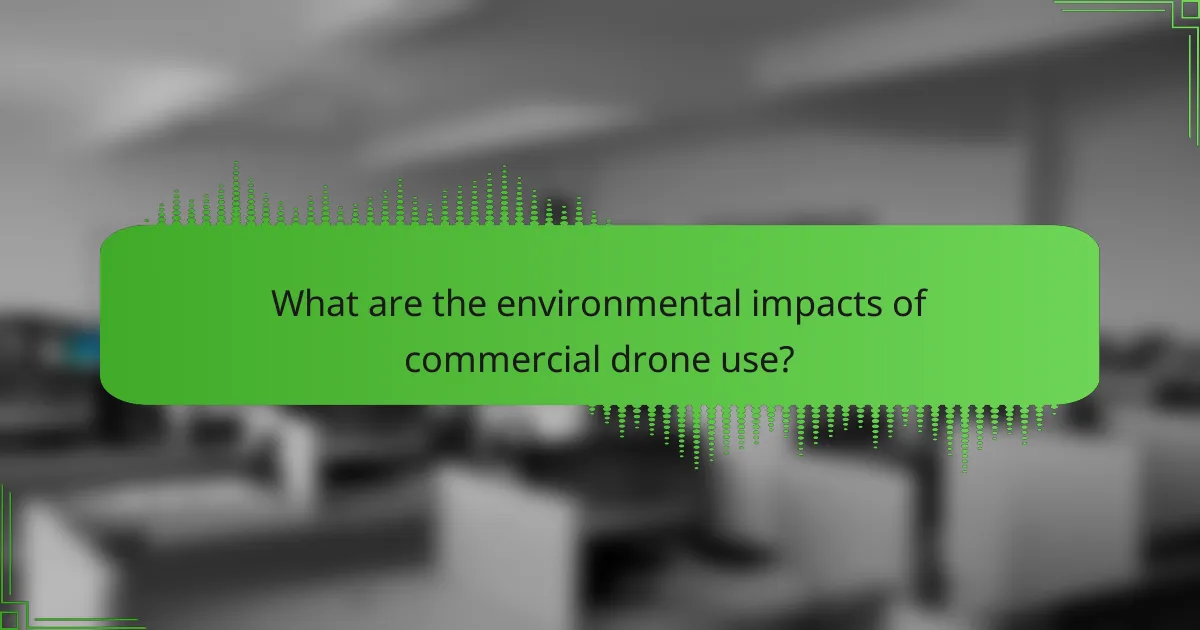
What are the environmental impacts of commercial drone use?
Commercial drone use has significant environmental impacts, including energy consumption and wildlife disturbance. Drones can reduce carbon emissions by optimising delivery routes, but their batteries contribute to electronic waste. Additionally, noise pollution from drone operations can disrupt local ecosystems. As a result, regulations are evolving to mitigate these effects while promoting sustainable practices in the industry.
How do drones contribute to wildlife conservation efforts?
Drones significantly enhance wildlife conservation efforts by providing aerial surveillance, data collection, and habitat monitoring. Their ability to access remote areas allows for real-time tracking of endangered species and detection of poaching activities. Drones can cover large territories quickly, offering insights into animal behaviour and population dynamics. For example, thermal imaging drones can identify heat signatures, making it easier to locate animals at night. This technology supports conservationists in making informed decisions to protect biodiversity effectively.
What are the potential negative environmental effects of drones?
Drones can negatively impact the environment through noise pollution, wildlife disturbance, and increased carbon emissions. Noise pollution can disrupt ecosystems, particularly in sensitive habitats. Wildlife may experience stress or altered behaviour due to drone activity, affecting reproduction and feeding patterns. Additionally, the production and operation of drones contribute to carbon emissions, albeit at a lower level compared to traditional delivery methods. These factors highlight the need for regulatory measures to mitigate environmental harm while deploying drones in commercial applications.
How can drones be used in disaster response and recovery?
Drones play a crucial role in disaster response and recovery by providing real-time data and aerial support. They assist in search and rescue operations, damage assessment, and delivering supplies to inaccessible areas. Drones equipped with thermal imaging can locate survivors quickly, while mapping capabilities allow for effective planning and resource allocation. Their ability to operate in hazardous environments enhances safety for first responders. Additionally, regulatory challenges around airspace and privacy must be navigated to maximise their potential in emergency situations.
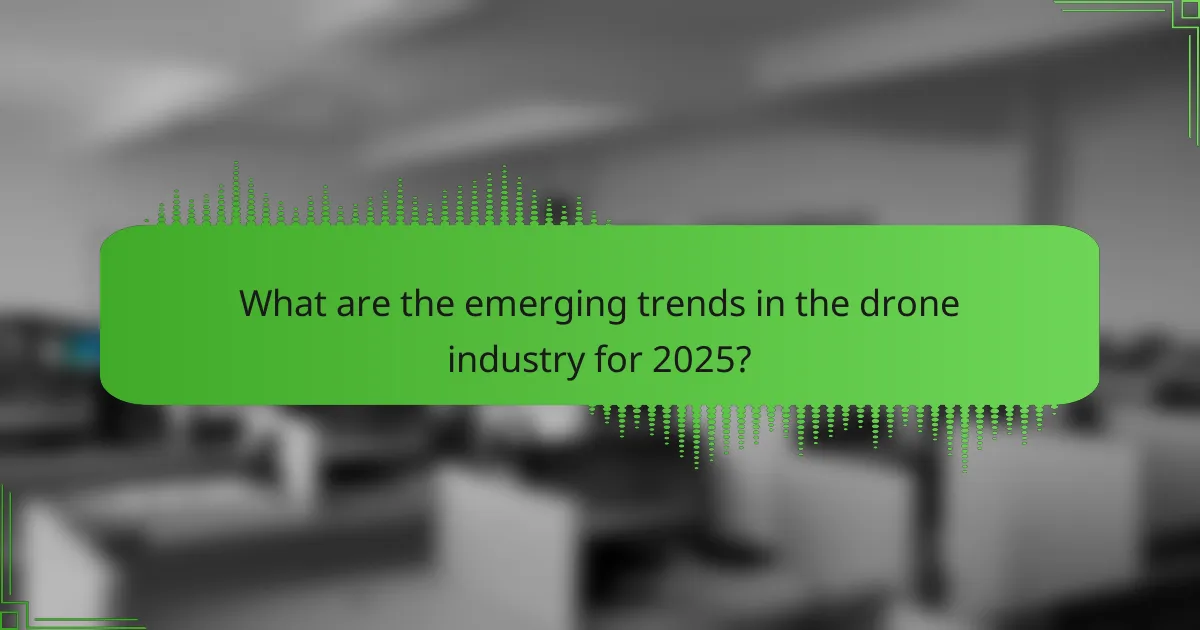
What are the emerging trends in the drone industry for 2025?
The drone industry is expected to see significant advancements in 2025, focusing on commercial applications and regulatory challenges. Key trends include increased use of drones for delivery services, enhanced automation in agriculture, and the integration of AI for improved navigation and safety. Regulatory frameworks are evolving to accommodate these advancements, emphasising safety and privacy. Additionally, drone technology will likely incorporate advanced sensors and communication systems, enabling real-time data collection and analysis.
How is the integration of drones with IoT transforming industries?
The integration of drones with IoT is transforming industries by enhancing data collection, improving operational efficiency, and enabling real-time monitoring. Drones equipped with IoT sensors collect vast amounts of data, which can be analysed for better decision-making. For instance, in agriculture, drones monitor crop health and optimise resource use, leading to increased yields. In logistics, drones streamline delivery processes, reducing costs and time. Additionally, regulatory challenges persist, requiring compliance with airspace regulations and safety standards. As industries adapt, the synergy between drones and IoT will continue to drive innovation and efficiency.
What are the predictions for drone delivery services in urban areas?
Drone delivery services in urban areas are expected to grow significantly due to advancements in technology and regulatory changes. Predictions indicate that by 2025, major cities will see a substantial increase in drone deliveries, enhancing logistics efficiency and reducing traffic congestion.
Factors influencing this growth include improved battery life, which allows drones to cover longer distances, and enhanced navigation systems that ensure safer operations in crowded environments. Regulatory frameworks are evolving to accommodate these innovations, with many cities piloting drone delivery programmes.
As a result, companies are investing in infrastructure to support urban drone operations, which will likely lead to widespread adoption. The unique attribute of drones is their ability to deliver goods directly to consumers, bypassing traditional transportation challenges.
How are drones being adapted for use in smart cities?
Drones are being adapted for smart cities by enhancing urban management and infrastructure monitoring. They provide real-time data collection for traffic management, environmental monitoring, and emergency response. For instance, drones equipped with sensors can assess air quality and detect infrastructure damage, improving city planning. Regulatory challenges include airspace management and privacy concerns, necessitating collaboration between governments and technology providers.
What are the common mistakes to avoid when operating drones commercially?
Common mistakes to avoid when operating drones commercially include neglecting regulatory compliance, inadequate training, and poor maintenance practices.
Failing to understand local and federal regulations can lead to legal issues. Ensure all necessary permits and licences are obtained. Additionally, operators should receive comprehensive training to handle drones safely and effectively. Regular maintenance checks are crucial to prevent equipment failures during operations. Lastly, underestimating the importance of insurance can expose businesses to financial risks.
